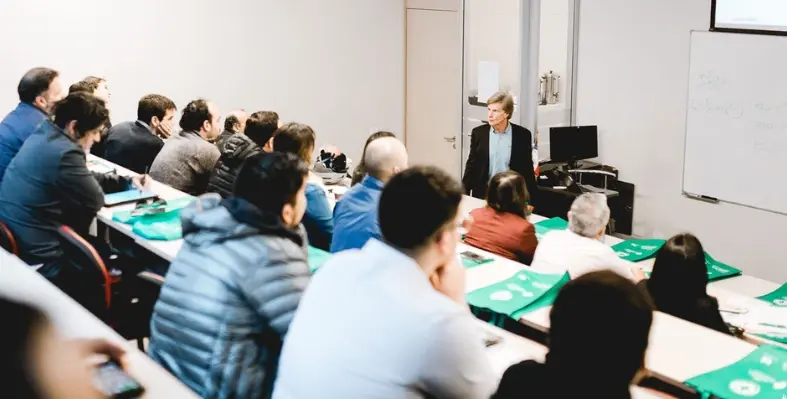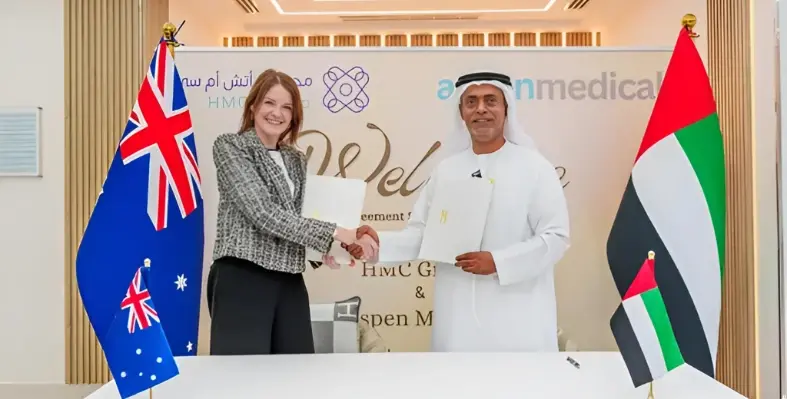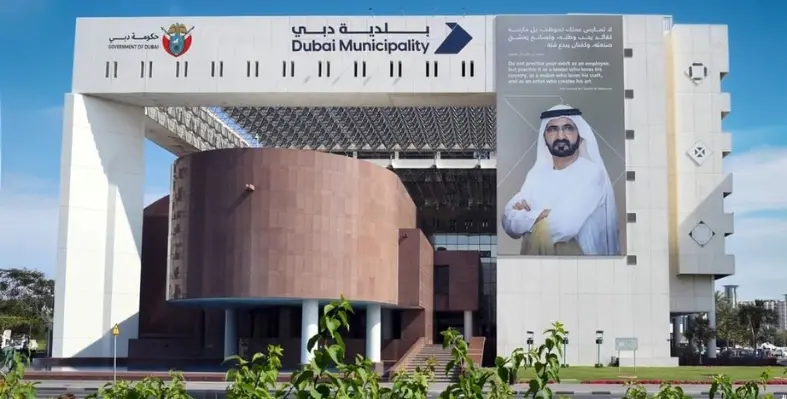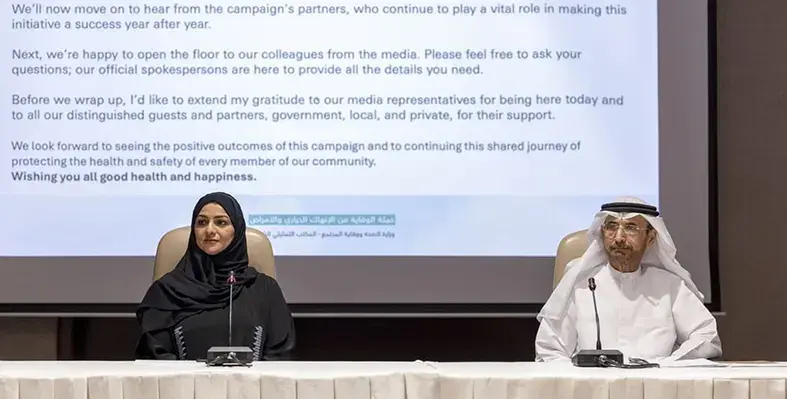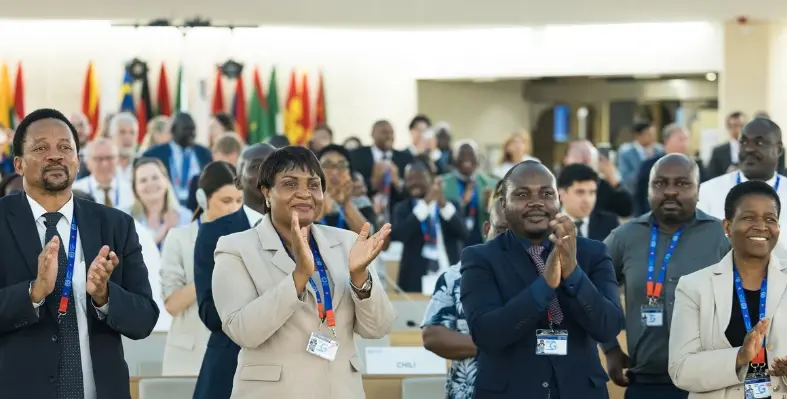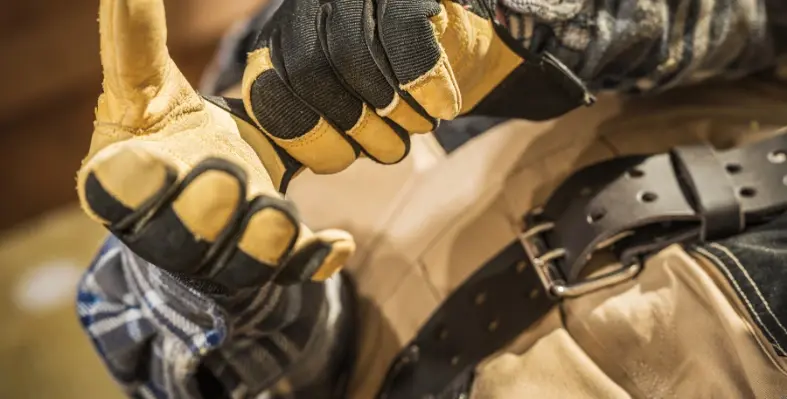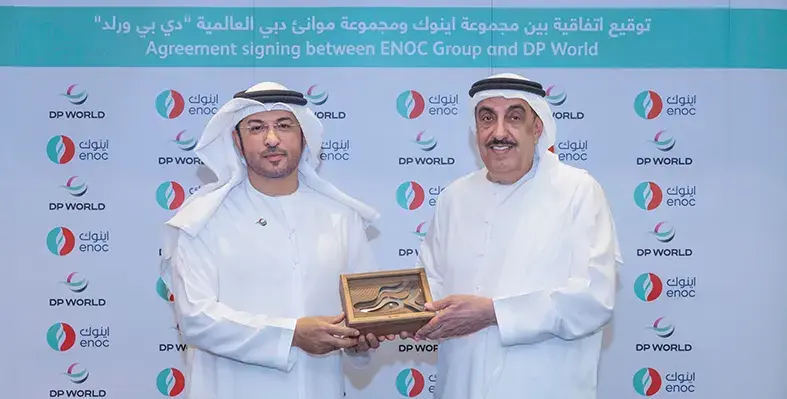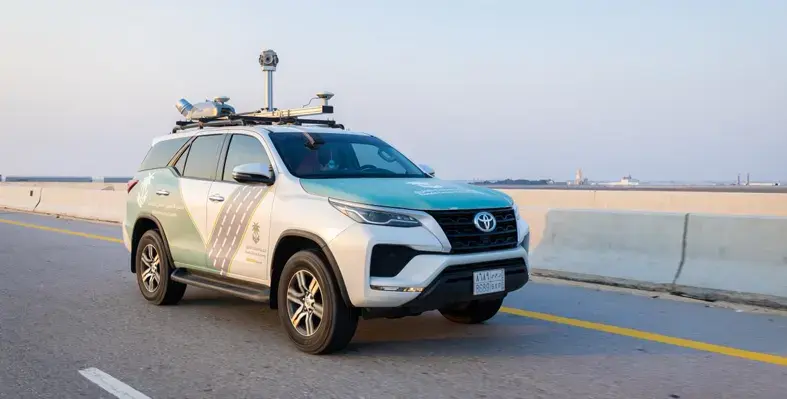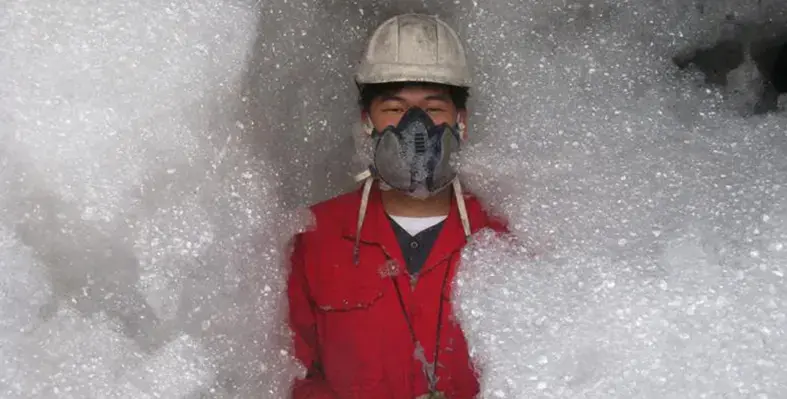Industrial Insights
Industrial Insights
- Details
- Sania Aziz
- Industrial Insights
- Date: 24 June, 2025
- Year: 2025
FOR IMMEDIATE RELEASE
-
Participants will become certified SafeStart trainers, gaining the ability to deliver the programme internally within their own organisations.
-
The course includes structured personal storytelling exercises to reinforce learning and enhance peer-to-peer knowledge sharing.
Manila, Philippines – SafeStart International, a global leader in human factors and injury prevention training, will hold its Trainer Certification Level 1 Course from 22-23 July 2025 at Ascott Bonifacio Global City Manila, located in Taguig, Metro Manila.
Designed to empower in-house safety leaders and training professionals, this certification course equips participants to deliver SafeStart’s core principles within their organisations. The highly interactive programme focuses on understanding human error, risk patterns, and behavioural safety, enabling internal trainers to drive long-term cultural change.
Leading the sessions are two of SafeStart’s top global facilitators: Larry Wilson, Founder of SafeStart and a pioneer in the field of human factors, and Sarah Stoker, Development Director at SafeStart with over 20 years’ experience in operational and safety consulting. Together, they bring unmatched expertise in safety performance training across industries and regions.
The course blends theoretical insights with practical application, covering critical error reduction techniques, state-to-error risk recognition, and strategies for improving decision-making in high-pressure environments. Participants will also engage in personal storytelling exercises and group discussions to reinforce the SafeStart methodology.
Upon successful completion, participants will be certified to deliver SafeStart Level 1 training within their own organisations, paving the way for stronger internal capability and a sustainable, 24/7 safety culture.
Event details:
Dates: 22–23 July 2025
Venue: Ascott Bonifacio Global City Manila, 5th Avenue, corner 28th Street, Taguig, Metro Manila - 1634 Philippines
Spaces are limited and early registration is encouraged. More details can be found on Offshore Network.
Register for the Early Bird offer, which expires June 30 2025.
About SafeStart International
SafeStart is a globally recognised human performance programme that helps organisations reduce injuries and improve performance by addressing human error. With more than 5 million people trained across 75 countries, SafeStart provides practical tools that work 24/7 on the job and beyond.
About Offshore Network
Offshore Network is a trusted platform dedicated to advancing safety, operational excellence, and innovation in the offshore oil and gas industry. Through events, insights and expert-led initiatives, it connects safety professionals and decision-makers across the global energy sector.
For all enquiries, please contact:
Imran Uddin
Project Manager
Offshore Network
UK (Tel) +44 (0) 207 834 7676
E:
-ENDS-
- Details
- Sania Aziz
- Industrial Insights
- Date: 24 June, 2025
- Year: 2025
Aspen Medical has signed a Memorandum of Understanding (MoU) with Holistic Medical Centre (HMC) to enhance integrated healthcare services for high-impact industries across the UAE.
The partnership supports the nation’s increasing emphasis on workplace wellbeing and the advancement of occupational health standards.
With more than nine years of experience in occupational healthcare, Aspen Medical will collaborate with HMC to design and deliver tailored health programmes that promote safer, more resilient work environments.
Occupational medicine remains vital in preventing and managing work-related illnesses, helping ensure employees remain healthy and productive.
The agreement outlines a shared commitment to delivering comprehensive healthcare solutions for key sectors, including defence, energy, corporate, and national security.
These services will be accessible in both urban centres and remote locations, ensuring readiness wherever it is required. Under the MoU, HMC will lead occupational health and specialist referrals, while Aspen Medical will provide onsite medical care and clinical advisory support.
The partnership also includes joint wellness initiatives such as immunisations, preventive screenings, and long-term health risk management.
Looking ahead, the collaboration will explore the introduction of additional services focused on workforce wellbeing. These could include mental health awareness initiatives and basic workplace training, such as first aid courses which strengthen organisational preparedness and support a culture of health and safety.
Claire Westbrooke-Keir, general manager of Aspen Medical UAE, said, “The UAE’s investment in occupational health reflects a clear understanding of the link between workforce wellbeing and long-term national resilience. Our partnership with HMC is built on shared values and a commitment to practical, high-quality solutions that meet the real needs of industries and employees alike.”
Dr. Nahyan Helal, founder and CEO of Holistic Medical Centre, added, “Occupational healthcare has long been a cornerstone of public health. This collaboration builds on that foundation, helping employers meet regulatory requirements while enhancing the wellbeing of their teams through accessible, tailored medical support.”
- Details
- Sania Aziz
- Industrial Insights
- Date: 23 Jun, 2025
- Year: 2025
To mark World Hydrography Day, Dubai Municipality hosted an event titled “Enhancing Safety, Efficiency, and Sustainability in Maritime Activities,” spotlighting the vital role of hydrographic surveying in infrastructure planning and marine sustainability.
The event also highlighted the Municipality’s advancements in producing nautical charts and its contributions to the responsible use of marine resources in line with the UN Sustainable Development Goals (SDGs).
As a member of the International Hydrographic Organization (IHO), Dubai Municipality reaffirmed its commitment to enhancing navigational safety and developing a robust hydrographic survey system.
These efforts support the Municipality’s broader vision of leveraging innovation to create cutting-edge urban planning systems and achieving global competitiveness in hydrographic services.
The event showcased Dubai’s latest tools, technologies, and practices used in marine project implementation. It also demonstrated how detailed hydrographic data and updated nautical charts are improving maritime navigation, supporting coastal urban development, and protecting the marine environment.
Dubai Municipality’s participation in international initiatives under the IHO framework reflects its aim to promote knowledge-sharing and expand the societal benefits of hydrographic data.
Since becoming the first government entity in the UAE and Middle East to join the IHO in February 2023, the Municipality has reinforced its status as a global leader in hydrographic surveying and nautical charting, playing a key role in enhancing maritime safety across Dubai’s coastal waters.
- Details
- Sania Aziz
- Industrial Insights
- Date: 20 June, 2025
- Year: 2025
The Ministry of Health and Prevention (MoHAP), in collaboration with the Sharjah Supreme Council for Family Affairs and various public and private sector partners, launched the 14th Heat Exhaustion and Disease Prevention Campaign, themed “Your Safety is Our Priority”.
Set to begin on 3 July, the campaign coincides with the midday work ban in July and August, aiming to raise awareness of heat exposure risks and equip outdoor workers with tools to prevent heat-related illnesses.
The campaign was unveiled at a press conference at the Sharjah Chamber of Commerce and Industry.
This year’s initiative broadens its focus to include families, domestic workers, factory employees, and field-based professionals such as police officers, municipal inspectors, engineers, and delivery drivers.
Awareness efforts will include virtual sessions, SMS alerts, and on-site events across more than nine locations in Sharjah and its Central and Eastern Regions.
These will feature educational lectures, medical screenings, and health-focused competitions with giveaways to encourage safe practices.
Increased field inspections, in partnership with the Ministry of Human Resources and Emiratisation, will ensure compliance with the midday work ban, while workers will receive protective gear, food, and drinking water.
A multimedia campaign across radio, TV, and social platforms will further amplify health and safety messages.
A PPP initiative
Partners include the Ministry of Human Resources and Emiratisation, Sharjah Government Media Bureau, Sharjah Police, Emirates Health Services, Sharjah Sports Council, Labour Standards Development Authority, Sharjah Municipality, Sharjah Broadcasting Authority, Prevention and Safety Authority, Sharjah Volunteering Centre, Sharjah Coop, Sharjah Charity International, the Friends of Kidney Patients Association, Emirates Red Crescent, Sharjah Investment and Development Authority (Shurooq), Fast Building Contracting, Al Jaber Optical, Medcare Group, Aster DM Healthcare, Burjeel Specialty Hospital, NMC Hospital, Zulekha Hospital, Life Pharmacy Group, and Gaia Healthcare.
Mohammed Al Zarooni, Director of MoHAP’s Representative Office in Sharjah, stated that the campaign reflects the UAE’s commitment to safeguarding worker welfare and fostering safe work environments.
He noted that it adheres to World Health Organisation standards and contributes to sustainable development by prioritising human health.
Al Zarooni added that the campaign will expand outreach, provide multilingual resources, and promote a culture of safety across all sectors.
“Empowering people and ensuring a balance between workplace demands and public health is essential, especially during the summer. This campaign reinforces MoHAP’s dedication to preventive care and builds solidarity between institutions and communities,” he said.
Iman Rashid Saif, Director of the Health Promotion Department at the Sharjah Supreme Council for Family Affairs, said the campaign exemplifies social responsibility and human solidarity, in line with the vision of Sheikha Jawaher bint Mohammed Al Qasimi, Chairperson of the Council.
She highlighted that the initiative provides guidance on hydration, sun avoidance, appropriate clothing, and nutrition to help workers manage heat effectively.
“It is the unity of the campaign’s partners and associations that drives this mission forward,” she added.
- Details
- Sania Aziz
- Industrial Insights
- Date: 19 June, 2025
- Year: 2025
The International Code Council Evaluation Service (ICC-ES) has granted Evaluation Service Report ESR-5402 to SmartCare CureAssure, a pioneering internal curing admixture developed by Asian Paints.
This chloride-free, Type S liquid admixture enhances concrete performance by retaining internal moisture, reducing reliance on traditional external curing methods, and marks a significant step forward in sustainable construction practices in the region.
SmartCare CureAssure is the first product of its kind to be evaluated for compliance with the Dubai Building Code (DBC), earning official approval from Dubai Municipality under ICC-ES Acceptance Criteria AC564 for internal curing concrete admixtures.
In a region where concrete construction prevails and challenges like embodied carbon and resource consumption persist, this admixture offers a practical solution.
It boosts concrete strength and durability while significantly cutting water usage, aligning with the Gulf Cooperation Council’s (GCC) environmental and sustainability objectives.
Reducing risks
The approval establishes a robust precedent for adopting sustainable building technologies across the region.
By providing third-party technical validation, ICC-ES demonstrates a clear pathway for emerging technologies to meet stringent code requirements, fostering opportunities for greener construction methods.
This empowers manufacturers, developers, and regulators to adopt innovative solutions that enhance building resilience, environmental performance, and resource efficiency, contributing to a more sustainable built environment in the GCC and beyond.
The milestone underscores ICC-ES’s ongoing commitment to evaluating innovative systems that address the growing demands for building safety, sustainability, and performance in the Middle East and North Africa (MENA) region.
Evaluation Service Reports provide technical validation for novel materials and systems, facilitating market access for global manufacturers while ensuring compliance with local codes, thus reducing risks and streamlining adoption.
Mohamed Amer, managing director of ICC MENA, stated, "We are proud to support the advancement of sustainable and resilient construction practices through the issuance of this ESR. By validating innovative systems such as SmartCare CureAssure against rigorous code requirements, ICC-ES is helping pave the way for a safer, more efficient, and environmentally responsible construction future - one that aligns with the GCC’s long-term development goals."
Joseph Eapen, CEO of Asian Paints International Private Ltd, said, "This achievement reflects our commitment to delivering high-performance, sustainable solutions for the construction sector. Having ICC-ES independently verify the performance of our system for compliance with the DBC reinforces our dedication to innovation and environmental stewardship."
- Details
- Sania Aziz
- Industrial Insights
- Date: 18 June, 2025
- Year: 2025
The 113th International Labour Conference (ILC) concluded on 13 June with a groundbreaking achievement: the adoption of the world’s first international labour standards to protect workers from biological hazards in the workplace. Convention No. 192 (C192) marks a significant milestone in global efforts to bolster occupational health and safety across all sectors.
The new Convention mandates that ILO Member States develop national policies to prevent exposure to biological hazards, implement protective measures, and establish preparedness and response strategies for emergencies, such as outbreaks or pandemics.
Employers are required to collaborate with workers to enact preventive measures, ensuring workers are informed and trained about associated risks.
An accompanying Recommendation provides detailed guidance, including risk assessments, early warning systems, and training protocols.
It clarifies the definition of biological hazards, outlining transmission routes such as airborne, contact, or vector-borne pathways.
Together, these instruments form a robust, adaptable framework to safeguard workplaces now and in the future.
While Conventions are legally binding upon ratification, Recommendations serve as non-binding guidelines.
The plenary session reviewed ILO Director-General Gilbert F. Houngbo’s report, Jobs, Rights and Growth: Reinforcing the Connection.
Speaking at the closing ceremony, Houngbo emphasised the consensus among delegates that social dialogue and democratic institutions are vital for fostering social cohesion and supporting sustainable, human-centred societies.
He also highlighted the registration of 18 ratification instruments from eight Member States during the session.
“Our mandate matters more than ever,” Houngbo said. “We are duty-bound to keep moving steadfastly forward on the quest for social justice, together.”
The Conference initiated its first standard-setting discussion on decent work in the platform economy, a crucial step towards improving conditions for digital platform workers.
Delegates agreed on key elements, including the creation of a Convention supported by a Recommendation, and established basic definitions and scope.
Proposed standards address fundamental rights, fair remuneration, social security, occupational safety, data privacy, and dispute resolution.
Discussions will continue at the 114th ILC in 2026, aiming for adoption of both instruments.
Reducing informality and maritime labour
The ILC adopted a Resolution to reduce informality and support the transition to formal employment.
The Resolution urges action to enhance working conditions, extend social protection, and create decent jobs, particularly for those most impacted by informality.
It also calls for a global roadmap and national strategies supported by the ILO.
In maritime labour, the Conference approved seven amendments to the 2006 Maritime Labour Convention (MLC) Code.
These address violence and harassment on ships, reinforce seafarers’ rights to shore leave and repatriation, and recognise seafarers as key workers.
The amendments also improve access to medical care and ensure fair treatment during detention or maritime incidents.
- Details
- Sania Aziz
- Industrial Insights
- Topic: Industrial
- Date: 17 Jun, 2025
- Year: 2025
SHOWA Group is an integrated manufacturer of industrial hand protection based in The Netherlands. The company's product manager for the EMEA region, Gabriel Szelényi, explains how the company's products can help workers. Read on:
In sectors where ATEX (EXplosive ATmospheres) are a real and ongoing risk, such as chemical processing, oil and gas, and grain handling, the role of electrostatic discharge (ESD) protection takes on a different urgency.
The primary concern is not about preserving electronics but about preventing the smallest static spark from igniting flammable gases, vapours or dusts.
In these high-risk ATEX zones, gloves that meet the appropriate ESD standards play a critical part in comprehensive safety protocols.
Electrostatic discharge may be invisible, but its consequences in an explosive atmosphere can be devastating. Static electricity builds up through everyday activity such as moving, lifting or simply interacting with certain materials.
Without adequate dissipation, that charge can release as a spark. In areas classified under the ATEX Directive 2014/34/EU, where the presence of explosive gases or dust is likely, this kind of spark could trigger a fire or explosion.
In such settings, the use of personal protective equipment (PPE) must go beyond mechanical protection.
Items like gloves, boots and clothing must be able to safely dissipate electrostatic charge.
The European standard EN 16350 sets requirements specifically for gloves used in potentially explosive atmospheres.
Meeting this standard is a key step toward regulatory compliance and risk mitigation.
A defining feature of gloves designed for ATEX zones is their vertical resistance.
Unlike surface resistivity, which measures how electricity travels across the surface of a material, vertical resistance assesses how effectively a charge passes through it, from the surface in contact with the skin to the outer surface.
This is crucial for dissipating static between the worker’s body and the environment.
To comply with EN 16350, gloves must demonstrate a vertical resistance of less than 1.0 x 10^8 Ohms when tested under controlled temperature and humidity conditions.
This ensures any charge generated during movement or contact is safely conducted away, reducing the risk of ignition.
ESD gloves with appropriate vertical resistance are increasingly found in industries where flammable materials are routinely handled.
In oil and gas facilities, paint mixing plants, pharmaceutical labs and chemical processing lines, airborne particles or vapours often create environments where a single spark could have serious consequences.
The same applies to logistics and maintenance operations. Workers involved in transferring fuel, cleaning storage tanks or entering confined spaces such as silos or reactors also require gloves that help prevent electrostatic buildup.
In these settings, gloves must combine electrostatic protection with chemical resistance, cut protection or oil grip, depending on the task.
Innovations in ESD glove design
To meet these complex demands, manufacturers have developed gloves that combine multiple forms of protection in a single product without compromising comfort or dexterity. SHOWA offers a comprehensive range of ESD gloves engineered for demanding industrial environments.
SHOWA AX200 delivers antistatic protection in a lightweight, touch panel-compatible format, making it ideal for precision tasks requiring dexterity.
For environments where cut hazards and oily surfaces are prevalent, DURACoil Alpha AC800 combines a TDM cut level D rating with a breathable liner and S-embossed nitrile foam coating to enhance grip.
DURACoil Alpha AC200 offers similar levels of protection in a lighter construction, also suitable for touchscreen use.
For tasks involving chemical exposure, SHOWA 660ESDR features full PVC coating and oil resistance.
While not intended for cleanroom use, it is well suited for industrial roles requiring robust, all-round protection.
These gloves demonstrate how safety, compliance and productivity can be supported together.
By integrating ESD protection with other essential features, they minimise the need for glove changes between tasks and support safe, uninterrupted operations.
As awareness of ATEX hazards grows and safety expectations rise, vertical resistance is becoming a standard specification for hand protection in explosive environments.
For procurement teams and safety managers, understanding how gloves mitigate ESD risks in ATEX settings is essential to maintaining operational safety.
- Details
- Sania Aziz
- Industrial Insights
- Date: 16 Jun, 2025
- Year: 2025
One in three UK employees report feeling lonely at work, according to new research from workplace and ID card specialists, Digital ID.
The study reveals that 34% of workers regularly experience isolation, even in roles that are hybrid or fully connected through digital platforms.
Loneliness is not limited to those who live alone or work remotely full-time.
In fact, 23% of respondents said they had gone more than three days without having a meaningful conversation, despite constant communication via meetings, Slack channels, and emails.
For single people living alone, this figure rises sharply to 41%, underscoring a wider societal issue around digital-age disconnection.
The research highlights that nearly 29% of workers feel loneliest immediately after team meetings, suggesting that superficial interactions may leave employees feeling emotionally depleted rather than supported.
Meanwhile, 45% of hybrid workers admit to “looking busy” to conceal a lack of connection or purpose in their roles.
Industries most affected by this trend include technology, legal services, and customer support, which are sectors heavily dependent on digital communication or shift-based operations.
The findings, released ahead of Loneliness Awareness Week (10-16 June), call attention to the urgent need for employers to go beyond relying on digital tools and instead foster workplaces that are psychologically safe and emotionally supportive.
Adam Bennett, workplace culture expert and spokesperson at Digital ID, said, “We’re more digitally connected than ever before – but that doesn’t always translate to real human connection. Performative productivity, constant notifications, and shallow check-ins can hide a much deeper issue: many employees are silently struggling with loneliness. That’s not just a wellbeing concern – it’s a cultural and business one too.
“Loneliness at work doesn’t always look like someone sitting quietly at their desk. It can look like back-to-back Zooms, unread messages piling up, or even that team member who never takes their camera off mute. As employers, we need to create environments where connection is genuine, not just scheduled.”
- Details
- Louise Waters
- Training
- Topic: Training
- Date: 11 June 2025
- Year: 2025
ENOC Group and DP World have signed an agreement to enhance emergency and fire response capabilities across Dubai’s energy and logistics infrastructure, through joint training, planning and coordination
The MoU mandates an annual joint exercise to enhance training, preparedness, and response times, led by ENOC and DP World's emergency teams. It also outlines regular updates to emergency response plans and a shared protocol for engaging external parties to ensure swift and coordinated action.
ENOC Group continues to demonstrate its commitment to the highest levels of safety and emergency preparedness. In 2022, the Group launched an Emergency Response Centre in Jebel Ali in partnership with Dubai Civil Defence. More recently, members of ENOC’s Emergency Response Centre completed specialised training at the International Fire Training Centre in the UK, enhancing the Group’s HAZMAT and fire risk assessment capabilities. This advanced training equips firefighters with the skills to respond effectively to hazardous material incidents, perform complex rescue operations, and conduct fire risk assessments within the high-risk oil and gas sector. The group has specialised centres of excellence for delivering emergency response and crisis management and fire training services to corporate, segments and business units.
His Excellency Saif Humaid Al Falasi, Group CEO, ENOC, said, “This MoU marks a significant stride forward in solidifying our commitment to the highest safety standards and emergency preparedness. We are proud to collaborate with DP World, a partner who shares our deeply held values of ensuring operational safety and resilience across the board. This collaborative approach will undoubtedly enhance our collective ability to respond effectively to any unforeseen incidents, safeguarding our people, assets, and the community.”
His Excellency Abdulla Bin Damithan, CEO & managing director, DP World GCC said, “Safety is the core value that underpins everything we do at DP World. This agreement reflects our shared commitment to creating a safe environment for our people, assets and operations. Together with ENOC, we’re enhancing our ability to respond to emergencies and building more resilient, safe infrastructure to support regional trade.”
- Details
- Louise Waters
- Industrial Insights
- Topic: HSE
- Date: 6 June 2025
- Year: 2025
In advance of the Hajj season, the Saudi Roads General Authority (RGA) has launched a large and advanced AI-powered road inspection fleet. It consists of 18 high-tech units utilising five state-of-the-art technologies, all aimed at improving road safety, enhancing quality, and providing an exceptional experience for pilgrims.
The fleet includes specialised equipment for scanning surface damage, measuring the International Roughness Index (IRI), assessing pavement layer thickness, evaluating structural deflection, and testing skid resistance. Among the highlights are seven surface damage scanners equipped with high-resolution cameras, laser units, GPS, and data storage systems for precise analysis and immediate maintenance decisions, especially critical on routes to the holy sites.
Four IRI units evaluate road smoothness and driving comfort using laser sensors. Another three use multi-frequency radar to check pavement layer thickness, while another three measure road deflection under traffic loads using advanced sensor systems. A single skid resistance unit simulates rainy conditions to test friction levels and ensure safety in adverse weather.
The fleet also features a mobile digital imaging scanner that inspects unpaved elements such as road signs and safety barriers, assisting in identifying potential risks and optimising maintenance planning.
The Roads General Authority, the national regulator of Saudi Arabia’s Road sector, aims to raise the quality of roads to rank sixth globally by 2030 and reduce road fatalities to fewer than five per 100,000 people. The Kingdom has had considerable success in reducing road fatalities thanks to the efforts of the Ministry of Interior, Ministry of Health, Ministerial Committee of Traffic Safety, regional traffic safety committees and other authorities, with measures ranging from improving the road infrastructure and signage to traffic law enforcement and instilling safe driver behaviour. The road fatality rate dropped from 28.6 per 100,000 in 2016 to around 13 per 100,000 in 2023.
- Details
- Louise Waters
- Fire Safety
- Topic: Fire Safety
- Date: 3 June 2025
- Year: 2025
Survitec, a global leader in Survival Technology, has successfully completed extensive performance testing of new alcohol-resistant fluorine-free firefighting foam concentrates
The results validate the compatibility of the new foam concentrates with marine foam mixing systems and demonstrate that a safe transition away from PFAS (Per- and PolyFluoroAlkyl Substances) based products is feasible, in advance of the IMO’s PFAS phase-out deadline in 2026.
Allcohol-resistant, fluorine-free foam concentrates rely on different active ingredients to maintain firefighting effectiveness without using fluorinated compounds. The result is a denser, more viscous fluid that poses new challenges for marine dosing systems originally designed for lower-viscosity foams.
“Standard proportioners are not typically designed to handle this kind of fluid, so it was essential that we rigorously test the system to ensure compatibility and dosing accuracy,” explained Maciej Niescioruk, product manager, Foam Systems, at Survitec.
“An incorrect dosing ratio can result in a foam that is ineffective in suppressing a fire. Foam proportioning systems must comply with a strict dosing accuracy range of -0% to +30% to ensure that underdosing does not occur - a critical requirement to avoid system failure.
“This is particularly important when using high-viscosity foam concentrates, which typically generate higher flow resistance. If a standard, unchanged, proportioner is used, the increased resistance can cause the actual mixing ratio to fall below the nominal value, violating regulatory requirements and compromising foam performance. By implementing our findings from these tests, we can ensure that our customers won’t face that risk.”
In addition to proportioner compatibility, appropriate pump selection is essential. A standard centrifugal pump designed for low-viscosity, Newtonian fluids will struggle to cope with the new, fluorine-free formulae.
From January 1, 2026, the IMO’s MSC.532(107) regulation will prohibit the use and storage of foams containing PerFluoroOctane Sulfonate (PFOS), part of the wider PFAS family now being phased out globally due to growing concerns over its impact on human health and the environment, requiring shipowners and operators to transition to fluorine-free alternatives.
“Fluorine-free, alcohol-resistant foams are particularly suited for chemical tankers, Norwegian double-ended ferries, and methanol-fuelled vessels, where environmental performance and fire safety are paramount. The successful completion of these performance tests allows Survitec to offer a tested and validated solution that mitigates technical risk and supports a smooth, compliant transition to fluorine-free technology. The findings are already being implemented in current projects, including a system commissioning in Turkey,” added Niescioruk.
“These are safety-critical systems,” he warns. “Any significant changes to these systems must be handled carefully, allowing time to assess the engineering requirements and obtain the proper approvals. Our message to the market is clear: plan now, test early, and work with an OEM partner who understands the technical and regulatory landscape.”
- Details
- Louise Waters
- Technology
- Topic: Technology
- Date: 30 May 2025
- Year: 2025
With more than two million Muslims set to descend on Mecca for the annual hajj pilgrimage, Aramco Digital, in collaboration with the Communications, Space and Technology Commission (CST) has carried out a successful trial in crowd management using AI and specialised communications services in the Holy Sites
The trial was carried out in partnership with the Supreme Authority for Industrial Security, the Saudi Water Authority (SWA), and Saudi Arabia Railways (SAR).
The initial operational deployment of the 450 MHz mission-critical network combines AI-powered crowd management, secure communications and integrated digital infrastructure to enhance field operations and ensure a safer and more connected pilgrimage experience.
It will enable seamless, real-time voice and video communications, ensuring the quality and continuity of services provided to pilgrims while offering secure, high-efficiency connectivity with instant response, unaffected by network congestion.
The initiative reflects the network’s readiness to operate in complex, high-density environments – enabling in-depth performance analysis, real-time insight generation and faster decision-making across operations.
The system will provide real-time crowd and vehicle analytics, with instant detection of crowd density, vehicle types and movement patterns. Edge AI enables immediate recognition of safety incidents and traffic anomalies, enhancing control, reducing latency and eliminating dependence on the crowd.
By leveraging AI-powered crowd management, secure communications and integrated digital infrastructure in a complex, high density environment, the system sets a new standard in safety and efficiency and is set to enhance co-ordination for future Hajj operations.
The trials were conducted using specialised wireless communication network operating in the 450 MHz band, which was licensed to Aramco Digital in October 2024.
Eid AlHarbi, president of connectivity at Aramco Digital, commented, “The initial operational development of the mission-critical network during this year’s Hajj represented a pivotal milestone in demonstrating the network’s performance and resilience within one of the most operationally intensive and high-density environments. This step supports the broader national rollout, positioning the network as a key enabler for industrial sectors to accelerate their digital transformation in full alignment with Saudi Vision 2030.”
